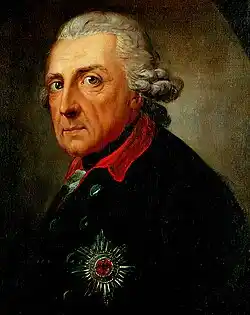Silesian surnames are the surnames held by people who come from the Silesia region of Central Europe. Silesia is a large region which lies at the juncture where Germany, Poland and Czechia meet today. Additionally, this is a mineral rich region which historically was valued by the powers of Central Europe and fought over. Owing to this it switched hands on several occasions in medieval, early modern and modern times. This has led to different languages being spoken here and different political and social values and rules being imposed over time. All of this has impacted on the surname landscape here and there is a mix of surnames that are of Germanic, Czech and Polish origin in the Silesia region.
History of Silesian surnamesHistory of Silesian surnames
In order to understand how the surname landscape of Silesia developed, one has to explore the torturous history of this highly important region of Central Europe. Few regions of the world have experienced quite so much conflict over the last two and a half millennia. Back in the Iron Age this lay at the eastern extremity of the lands settled by the Celts and would have formed a border region between them and the Scythians further to the east. The Romans subsequently came close to the region, but eventually settled their northern border along the River Danube, meaning that Silesia became a gathering place between the first and fifth centuries for groups like the Quadi, Marcomanni, Goths and Huns that were striking at Rome’s borders and then penetrating into the empire.[1]

In the centuries that followed Silesia was the eastern border of the Carolingian Empire for a time in the ninth century, while it was also the borderland of Western Christendom for a time. The decisive era though in terms of how conflicts over Silesia shaped the surnames here occurred in the early modern period (c. 1500–1800). During this time, Silesia emerged as a border zone which was contested by Austria, an emerging Prussia and the Polish-Lithuanian Commonwealth. This was especially the case owing to the mineral wealth of the region. Silesia is one of the most important regions in Europe for its coal mines and also seams of metals and minerals like zinc, copper, iron, cadmium and arsenic. The province, for instance, became the focus of tensions between Austria and Prussia in the early eighteenth century and Frederick the Great of Prussia wrested much of it from Austria in 1742 during the War of the Austrian Succession.[2] Later the Polish parts of Silesia were acquired by Prussia and Austria as part of the Partitions of Poland between the 1770s and 1790s. As all of this occurred competing surname traditions and languages gained dominance and then receded over time in Silesia, such that elements of German, Austrian, Czech and Polish surname conventions were all present here.
Finally, in more modern times Silesia came to be dominated by various iterations of the Czech and Polish states, Czechoslovakia and then the Czech Republic/Czechia in the case of the Moravian side of Silesia, and different Polish states in the case of Polish Silesia. Approximately two-thirds of the historic Silesia region lies in the south-western corner of Poland today. Much of the other third is in north-eastern and eastern Czechia, while only a quite small portion of Silesia is in eastern Germany today.[3]
Silesian naming conventionsSilesian naming conventions
This lengthy assessment of Silesia’s history is necessary to understand the naming conventions which are used here. Silesians have a range of different surnames. Historically German-derived surnames were more common here, as the region was controlled politically by Austria and Prussia/Germany between the early sixteenth and early twentieth centuries. However, Czech cultural influences in what was the Kingdom of Bohemia in the late medieval period were also widely present. In more modern times Polish surnames have come to predominate as Poland has reasserted its control over much of the Silesia region owing to German and Austrian defeats in the First and Second World Wars. As a result of all of this, Silesian surnames today are a broad patchwork of Polish, Czech, German and Austrian surnames. Polish and Czech surnames are increasingly dominant, though one will find regional variations, with Polish surnames dominant in cities like Kattowice and Wrocław in Poland and Czech ones dominant in Czech cities of Silesia like Ostrava. Unfortunately, at times these shifts have been the product of national policies of ethnic cleansing.[4]
Surnames of Silesian originSurnames of Silesian origin
While surnames that can be identified as German, Polish or Czech are found throughout Silesia as well as Germany, Austria, Poland and Czechia, there are some surnames that have been originated in this region, most of them associated with lower nobility,[5][6] such as the below. In most cases, the name has different spelling variants depending on the language of the bearer.
Famous SilesiansFamous Silesians

- Angelus Silesius – Born Johann Scheffler in Breslau in what is now Wrocław in Poland around 1624, this Roman Catholic mystic, priest and healer acquired the Latin name Angelus Silesius in his lifetime, transliterating as ‘the angel of Silesia’.[7]
- Manfred von Richthofen – The greatest German flying ace of the First World War, known as ‘The Red Baron’ on account of painting his plane bright red. His division of fighter planes became known as ‘Von Richthofen’s Flying Circus’. He was born in what was then known as Kleinburg in the Silesia region of the German Empire, a suburb of Wrocław in Poland today.[8]
- Maria Goeppert Mayer – Marie Mayer, née Goeppert was a theoretical physicist from Kattowitz (modern-day Katowice) in what was then the German Empire. In 1963 she became only the second woman to win the Nobel Prize in Physics for her work on the nuclear shell model of the atomic nucleus. Both her maiden and married surnames are Silesian surnames of Germanic origin.[9]
- Teofil Ociepka – An ethnically Polish painter from Silesia, born in a suburb of Katowice. He was one of the twentieth century’s more prominent primitivist and Theosophist painters.[10]
- Ivan Lendl – Lendl is one of the most successful male tennis players of all time, having won eight Grand Slam tournaments and spent 270 weeks as the World No. 1 player in the 1980s. He was born in Ostrava in what was then Czechoslovakia in the Silesia region. His surname is Germanic in origin and is more usually found in Austria.[11]
See alsoSee also
Explore more about Silesian surnamesExplore more about Silesian surnames
- Poland Gravestones record collection on MyHeritage
- Czechia, Church Books, 1552-1948 record collection on MyHeritage
- Czechia, Births and Baptisms, 1637-1889 record collection on MyHeritage
- Czechia, Marriages, 1654-1889 record collection on MyHeritage
References
- ↑ Allen Leeper, ‘Germans, Avars and Slavs’, in The Slavonic and East European Review, Vol. 12, No. 34 (July, 1933), pp. 117–132.
- ↑ https://www.nam.ac.uk/explore/war-austrian
- ↑ https://mappingeasterneurope.princeton.edu/item/silesia-a-brief-overview.html
- ↑ Tomasz Kamusella, The Dynamics of the Policies of Ethnic Cleansing in Silesia in the Nineteenth and Twentieth Centuries (Budapest, 1999).
- ↑ Familienchronik Jursitzky
- ↑ Shirdewan. Onomastik.com
- ↑ Frederick Franck, ‘Angelus Silesius, 1624–1677: A Bridge Between East and West?’, in The Eastern Buddhist, New Series, Vol. 8, No. 2 (October, 1975), pp. 130–142.
- ↑ https://www.history.com/topics/world-war-i/manfred-baron-von-richthofen
- ↑ https://www.nobelprize.org/prizes/physics/1963/mayer/biographical/
- ↑ https://culture.pl/en/artist/teofil-ociepka
- ↑ https://bleacherreport.com/articles/240966-ivan-lendl-the-most-underrated-tennis-champion-in-history

